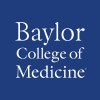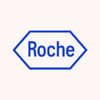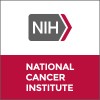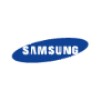
Cytotoxic T-Lymphocytes for EBV-positive Lymphoma, GRALE
Hodgkin's DiseaseNon-Hodgkin's Lymphoma2 moreSubjects have a type of lymph gland disease called Hodgkin or non-Hodgkin Lymphoma or T/NK-lymphoproliferative disease or severe chronic active Epstein Barr Virus (CAEBV) which has come back, is at risk of coming back, or has not gone away after treatment, including the best treatment we know for these diseases. Some of these patients show signs of virus that is called Epstein Barr virus (EBV) that causes mononucleosis or glandular fever ("mono" or the "kissing disease") before or at the time of their diagnosis. EBV is found in the cancer cells of up to half the patients with HD and NHL, suggesting that it may play a role in causing Lymphoma. The cancer cells and some immune system cells infected by EBV are able to hide from the body's immune system and escape destruction. We want to see if special white blood cells, called GRALE T cells, that have been trained to kill EBV infected cells can survive in the blood and affect the tumor. We have used this sort of therapy to treat a different type of cancer called post transplant lymphoma. In this type of cancer the tumor cells have 9 proteins made by EBV on their surface. We grew T cells in the lab that recognized all 9 proteins and were able to successfully prevent and treat post transplant lymphoma. However, in HD and NHL, T/NK-lymphoproliferative disease, and CAEBV, the tumor cells and B cells only express 4 EBV proteins. In a previous study, we made T cells that recognized all 9 proteins and gave them to patients with HD. Some patients had a partial response to this therapy but no patients had a complete response. We then did follow up studies where we made T cells that recognized the 2 EBV proteins seen in patients with lymphoma, T/NK-lymphoproliferative disease and CAEBV. We have treated over 50 people on those studies. About 60% of those patients who had disease at the time they got the cells had responses including some patients with complete responses. This study will expand on those results and we will try and make the T cells in the lab in a simpler faster way. These cells are called GRALE T cells. These GRALE T cells are an investigational product not approved by the FDA. The purpose of this study is to find the largest safe dose of LMP-specific cytotoxic GRALE T cells created using this new manufacturing technique. We will learn what the side effects are and to see whether this therapy might help patients with HD or NHL or EBV associated T/NK-lymphoproliferative disease or CAEBV.

Activated T-Cells Expressing 2nd or 3rd Generation CD19-Specific CAR, Advanced B-Cell NHL, ALL,...
Non-Hodgkin LymphomaChronic Lymphocytic Leukemia1 moreSubjects on this study have a type of lymph gland cancer called Non-Hodgkin Lymphoma, acute lymphocytic leukemia, or chronic Lymphocytic Leukemia (these diseases will be referred to as "lymphoma" or "leukemia"). The lymphoma or leukemia has come back or has not gone away after treatment. The body has different ways of fighting infection and disease. No one way seems perfect for fighting cancers. This research study combines two different ways of fighting disease, antibodies and T cells, hoping that they will work together. Both antibodies and T cells have been used to treat patients with cancer. They have shown promise, but have not been strong enough to cure most patients. T cells can kill tumor cells but normally there are not enough of them to kill all the tumor cells. Some researchers have taken T cells from a person's blood, grown more of them in the laboratory and then given them back to the person. The antibody used in this study is called anti-CD19. It first came from mice that have developed immunity to human lymphoma. This antibody sticks to lymphoma cells because of a substance on the outside of these cells called CD19. CD19 antibodies have been used to treat people with lymphoma and leukemia. For this study, anti-CD19 has been changed so that instead of floating free in the blood it is now joined to the T cells. When an antibody is joined to a T cell in this way it is called a chimeric receptor. In the laboratory, the investigators found that T cells work better if they also add proteins that stimulate T cells, such as one called CD28. Adding the CD28 makes the cells last longer in the body but not long enough for them to be able to kill the lymphoma cells. The investigators believe that if they add an extra stimulating protein, called CD137, the cells will have a better chance of killing the lymphoma cells. The investigators are going to see if this is true by putting the CD19 chimeric receptor with CD28 alone into half of the cells and the CD19 chimeric receptor with CD28 and CD137 into the other half of the cells. These CD19 chimeric receptor T cells with CD28 and with or without CD137 are investigational products not approved by the FDA. The purpose of this study is to find the biggest dose of chimeric T cells that is safe, to see how long the T cell with each sort of chimeric receptor lasts, to learn what the side effects are and to see whether this therapy might help people with lymphoma or leukemia.

Personalized Neoantigen Cancer Vaccine + Pembrolizumab After Rituximab for Follicular Lymphoma
Follicular LymphomaThis research study is studying a novel type of FL vaccine as a possible treatment for follicular lymphoma (FL). The agents involved in this study are: Rituximab Personalized NeoAntigen vaccine Poly-ICLC Pembrolizumab

An Open-Label Phase lB/II Study of Glofitamab and Atezolizumab or Polatuzumab Vedotin in Adult Patients...
Non-Hodgkins LymphomaThis is an open-label, single arm, multicenter, dose finding, Phase Ib study in order to assess the maximum tolerated dose (MTD) and/or recommended Phase II dose (RP2D) for this combination treatment and to evaluate the general safety, tolerability, pharmacokinetic (PK), pharmacodynamic, and preliminary anti-tumor activity of this combination treatment in adult patients. This study includes an additional open-label imaging feasibility sub-study using a tracer in adult participants with relpased/refractory B-cell non-Hodgkin's lymphoma to image CD8+T-cells at baseline and after treatment with glofitamab, including pre-treatment with obinutuzumab.

CD19/CD22 Chimeric Antigen Receptor (CAR) T Cells in Children and Young Adults With Recurrent or...
LymphomaNon-Hodgkin11 moreBackground: B-cell leukemias and lymphomas are cancers that are often difficult to treat. The primary objective of this study is to determine the ability to take a patient's own cells (T lymphocytes) and grow them in the laboratory with the CD19/CD22-CAR receptor gene through a process called 'lentiviral transduction (also considered gene therapy) and growing them to large numbers to use as a treatment for hematologic cancers in children and young adults.. Researchers want to see if giving modified CD19/CD22-CAR T cells to people with these cancers can attack cancer cells. In addition, the safety of giving these gene modified cells to humans will be tested at different cell doses. Additional objectives are to determine if this therapy can cause regression of B cell cancers and to measure if the gene modified cells survive in patients blood. Objective: To study the safety and effects of giving CD19/CD22-CAR T cells to children and young adults with B-cell cancer. Eligibility: People ages 3-39 with certain cancers that have not been cured by standard therapy. Their cancer tissue must express the CD19 protein. Design: A sample of participants blood or bone marrow will be sent to NIH and tested for leukemia. Participants will be screened with: Medical history Physical exam Urine and blood tests (including for HIV) Heart and eye tests Neurologic assessment and symptom checklist. Scans, bone marrow biopsy, and/or spinal tap Some participants will have lung tests. Participants will repeat these tests throughout the study and follow-up. Participants will have leukapheresis. Blood will be drawn from a plastic tube (IV) or needle in one arm then go through a machine that removes lymphocytes. The remaining blood will be returned to the participant s other arm. Participants will stay in the hospital about 2 weeks. There they will get: Two chemotherapy drugs by IV Their changed cells by IV Standard drugs for side effects Participants will have frequent follow-up visits for 1 year, then 5 visits for the next 4 years. Then they will answer questions and have blood tests every year for 15 years. ...

Rituximab Hyaluronidase in Combination With Chemotherapy in Treating Aggressive B-cell Lymphoma...
Burkitt LymphomaKSHV-associated Multicentric Castleman Disease1 moreThis phase I trial studies how well rituximab hyaluronidase and combination chemotherapy work in treating patients in Uganda with Burkitt lymphoma, diffuse large B-cell lymphoma, or Kaposi sarcoma herpesvirus associated multicentric Castleman disease. Rituximab hyaluronidase is a combination of rituximab and hyaluronidase. Rituximab binds to a molecule called CD20, which is found on B cells (a type of white blood cell) and some types of cancer cells. This may help the immune system kill cancer cells. Hyaluronidase allows rituximab to be given by injection under the skin. Giving rituximab and hyaluronidase by injection under the skin is faster than giving rituximab alone by infusion into the blood. Drugs used in chemotherapy, such as cyclophosphamide, vincristine, methotrexate, etoposide, doxorubicin, and prednisone work in different ways to stop the growth of tumor cells, either by killing the cells, by stopping them from dividing, or by stopping them from spreading. While rituximab has a clear survival benefit in patients within developed countries, differences in supportive care and infectious co-morbidities require special attention. Giving rituximab hyaluronidase alone or in combination with chemotherapy may work better in treating patients with Burkitt lymphoma, diffuse large B-cell lymphoma, or Kaposi sarcoma herpesvirus associated multicentric Castleman disease compared to chemotherapy alone in Uganda.

Inotuzumab Ozogamicin and Chemotherapy in Treating Patients With Leukemia or Lymphoma Undergoing...
Acute Lymphoblastic LeukemiaB Acute Lymphoblastic Leukemia2 moreThe goal of this phase II clinical study is to learn about the safety of inotuzumab ozogamicin when given with fludarabine, with or without bendamustine, melphalan, and rituximab before and after a stem cell transplant. Researchers also want to learn if inotuzumab ozogamicin when given after a stem cell transplant can help control leukemia and lymphoma. Inotuzumab ozogamicin is a monoclonal antibody, called inotuzumab, linked to a chemotherapy drug called ozogamicin. Inotuzumab attaches to CD22-positive cancer cells in a targeted way and delivers ozogamicin to kill them. Giving chemotherapy before a bone marrow or peripheral blood stem cell transplant helps stop the growth of cells in the bone marrow, including normal blood-forming cells (stem cells) and cancer cells. Sometimes the transplanted cells from a donor attack the body's normal cells (called graft-versus-host disease). Giving tacrolimus and filgrastim before or after the transplant may stop this from happening. Fludarabine, bendamustine, melphalan, and rituximab are commonly given before stem cell transplants. Giving inotuzumab ozogamicin with chemotherapy may work better in treating patients with leukemia or lymphoma undergoing stem cell transplantation.

Dose Escalation Study of mRNA-2752 for Intratumoral Injection to Participants in Advanced Malignancies...
Dose Escalation: Relapsed/Refractory Solid Tumor Malignancies or LymphomaDose Expansion: Triple Negative Breast Cancer5 moreThe clinical study will assess the safety and tolerability of escalating intratumoral doses of mRNA-2752 in participants with relapsed/refractory solid tumor malignancies or lymphoma.

Phase II of Lenalidomide After Salvage Therapy in R/R Non-Hodgkin T-cell Lymphoma
Relapsed and/or Refractory Non-Hodgkin T-cell LymphomaThis study is to evaluate the efficacy and safety of lenalidomide maintenance therapy in patients with T-cell lymphoma who have undergone more than one treatment or relapsed after treatment and who acquired a response of more than a partial response after rescue chemotherapy. This is a phase 2 clinical trial.

Combination Chemotherapy in Treating Patients With Relapsed or Refractory Acute Lymphoblastic Leukemia,...
Recurrent Acute Lymphoblastic LeukemiaRecurrent Adult Lymphoblastic Lymphoma9 moreThis phase II trial studies the side effects and how well combination chemotherapy works in treating patients with acute lymphoblastic leukemia, lymphoblastic lymphoma, Burkitt lymphoma/leukemia, or double-hit lymphoma/leukemia that has come back or does not respond to treatment. Drugs used in chemotherapy, such as clofarabine, etoposide, cyclophosphamide, vincristine sulfate liposome, dexamethasone and bortezomib, work in different ways to stop the growth of tumor cells, either by killing the cells, by stopping them from dividing, or by stopping them from spreading.
